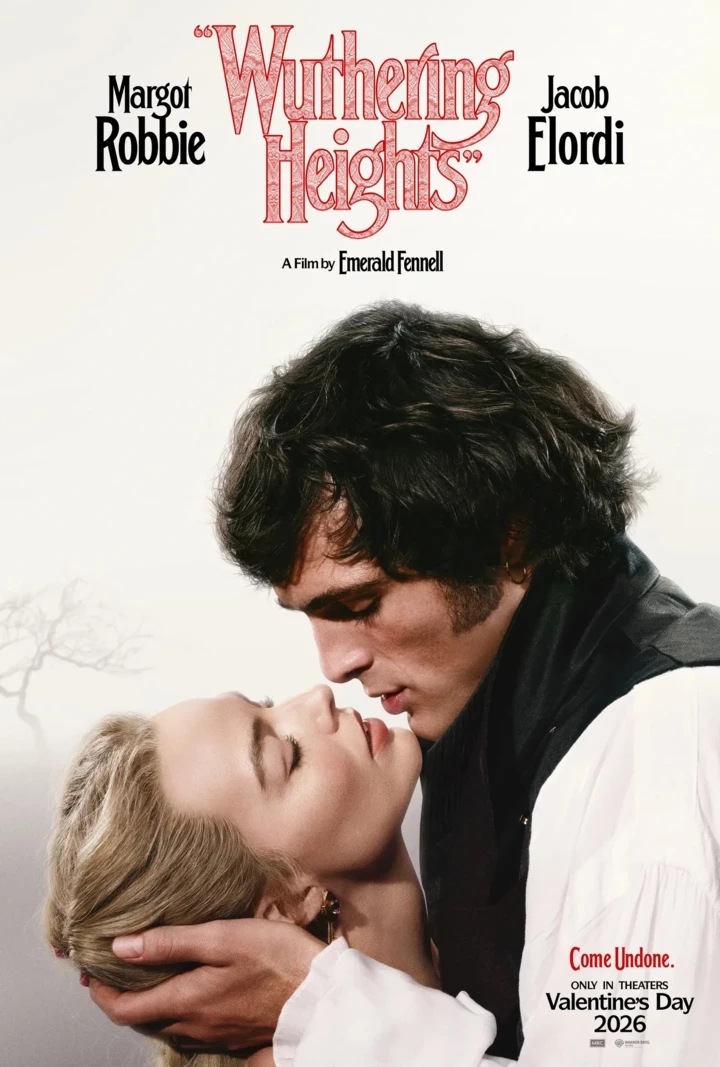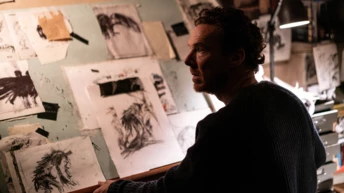
Save this storySave this storySave this storySave this story
With movie adaptations of books, the essential virtue is audacity, the readiness to transform the source material. That’s equally true of documentaries, as seen in “Videoheaven,” Alex Ross Perry’s teeming new film about video stores (which is playing June 10th-12th at the Tribeca Film Festival). “Videoheaven” is inspired by “Videoland: Movie Culture at the American Video Store,” by Daniel Herbert, a professor of film and media at the University of Michigan. In the book’s introduction, Herbert writes, “I am less interested in ‘video’ as a medium or an aesthetic than I am in the spaces in which many people interacted around video objects.” In other words, his subject is the social role of video stores in the American commercial and cinematic landscape during their heyday, from the late nineteen-seventies until around 2010. Perry’s film ricochets off Herbert’s subject in imaginative fashion: nearly three hours long, it is an engrossing, thematically organized compilation of clips from more than a hundred movies (and a few TV shows) in which video stores are depicted. (There’s a voice-over commentary throughout, written by Perry and delivered by Maya Hawke.)
Whereas Herbert’s book focusses on interactions in video stores, the film considers fictional depictions of those interactions; Herbert looks at life, but Perry looks at the very subject that’s the essence of his career and his art: movies. For Perry, the importance of video stores isn’t just that they were a mode of social life but that this mode of life proved particularly generative of cinema. There’s a delicious circularity to his vision: video stores are important because they’re depicted in movies, and they’re depicted in movies because they were a significant part of daily life.
Movie depictions of video stores are inherently self-reflexive, and many of them express the resistance of the theatrical-movie business to its home-video frenemy. (Horror movies often featured video stores as settings, Perry shows, coding them as dubious and menacing spaces, thus reflecting and propagating the terrors that home video inspired in studio executives.) Video stores, as Perry points out, thrived as independent businesses in the eighties, were dominated by Blockbuster and other chains in the nineties, lost ground to big-box-store DVD sales in the two-thousands, and were just about obliterated by streaming services by the early twenty-tens. Yet, though the rise of video rentals shrank the public space of movies by keeping more viewers at home, the video store arguably expanded the public space of movies by its ubiquity, covering the commercial landscape much more densely than movie theatres did. Perry emphasizes that, at their peak, a majority of video stores were less than a quarter mile away from another video store.
Perry’s tweak of the book’s title reflects his own view of the video store as a sort of paradise, albeit now a lost one. As a filmmaker, his lament is less for the shift in social life at large than it is for the decrease in dramatic possibilities—whether realistic or imaginary—that daily life offers to filmmakers in the absence of the interactions and calculations that take place in video stores. In a way, “Videoheaven” asserts the importance of video stores through a negative form: by contrast with the cinematic void of the streaming experience. What emerges, above all, from “Videoheaven” is a sense of impasse—of the difficulty, in the age of streaming, of depicting ordinary cinematic experience. As much as it’s an elegy for the video store itself, it’s a cry of frustration at the poor fit of traditional cinematic forms for the way that people watch movies now. (Perry’s other 2025 feature, the docufiction “Pavements,” offers a frenetically fragmented yet dramatically coherent form that indeed contends vigorously with the current mediascape—and that’s drastically different from his previous features and from just about anyone else’s.)
The biggest aesthetic kick in “Videoheaven” comes at the start, with an extended clip from Michael Almereyda’s 2000 modernization of “Hamlet,” in which Ethan Hawke delivers the dithering prince’s famous soliloquy of existential indecision in a video store, the very site of agonizing indecision for so many movie lovers. Throughout, Perry’s documentary shares a problem endemic to thematic studies of movies, whether academic or popular: its cross-section is necessarily art-indifferent, and not all the footage here is enlivening. One can as readily rent a tape of a bad movie as a good one, after all. The same is true of buying a ticket at a movie theatre, but the advent of home video added an additional artistic vector to the movie-viewing experience, by expanding the range of options far beyond new or recent movies.
That’s the prime point of connection between Perry’s celebration of video stores and a comparably wide-ranging screening series, “A Theater Near You,” which starts this Thursday at MOMA. The series, programmed by David Schwartz, is devoted to New York City’s repertory cinemas, past and present, and each of its forty-plus films has been selected to exemplify one of the seventeen theatres that the series celebrates. The primordial ones are MOMA itself, which began to collect and screen films in 1935; the Thalia, of the Upper West Side, which became a revival house in 1938 (and closed in 1993); and Cinema 16, a film society that ran from 1947 to 1963. It also includes such venerable theatres as Film Forum and Anthology Film Archives (both founded in 1970). The most recently established venues include Light Industry, Maysles Documentary Center, and Spectacle, all established within the last twenty years.
Like all theatres, each of these sites is (or was) a social space—even if Anthology initially featured partitions between and behind seats in order to privatize public viewing. The repertory audience is somewhat self-selecting, departing from the mass-market path of new releases. The curious and the connoisseurs who form that audience figure in “Videoheaven,” too, primarily in the popular movie trope of the video clerk who, whether arrogant or nerdy, a snotty know-it-all or a real connoisseur, runs the store like a lord of cinephilia and proves to be an obstacle to mere fun. As Perry (himself a former video clerk, at the cinephile haven Kim’s Video) makes clear, the characters in question are parodies, fictional creations introduced to artificially ramp up the drama of the video-store experience, usually by antagonizing or humiliating customers. The clerk functions, in effect, as a film critic, except that their judgments are delivered in person and are designed to make customers feel bad about their taste. Such parodies serve the studio’s interests demagogically: the video store (which is to say, the noncorporate, independent, idiosyncratic video store) looks off-putting (unlike the nonjudgmental multiplex) and the snarky snobbery of clerks asserts the common decency of the general audience’s embrace of mass-market entertainment.
For all the ballyhoo about the social desirability of moviegoing—the thrill of laughing or crying with a crowd, of a collective gasp of surprise or horror—the most important aspect of the theatrical experience, whether for studio films, art-house releases, or revivals, is commercial. Perry relates that, though studios feared the rise of VHS as a drain on theatrical business, home video proved to be a valuable additional source of revenue; the only kind of theatrical release killed off by video rentals, he says, was porn. I’d argue that, although video rentals and, now, streaming may have made a dent in moviegoing, a much more grievous blow has come from the rise of so-called prestige television and the streaming not of movies but of series, which, unlike movies, engender dependency—and which have fostered the shift of the social experience once provided by video stores, and by theatres before them, into social media.
I have vivid memories, from before the age of video stores (and long before I got my first VCR, in 1988), of impatiently waiting for the Village Voice to hit newsstands, on Wednesday nights, and ploughing through the revivals listings to figure out what I’d get to see that week. I remember waiting years for particular movies I’d only read about to be programmed at a revival house—and sometimes I wasn’t free when the long-awaited screening occurred. Video rentals later became an important supplement to my assiduous revival-house habit, and I loved to rent movies at the dear departed Video Room, where the manager, Howard Salen, a consummate cinephile devoid of snobbery, established a welcoming salon-like atmosphere. But what I loved even more, I found, was the chance to own movies—to accumulate a video library of my own.
The crucial empowerment of home video was, and still is, ownership—taking the threat of unavailability out of the hands of film distributors, theatres, stores, and, now, streaming services. At first, I recorded movies off television; then I bought prerecorded tapes, usually ones sold off as video stores’ surplus or, sometimes, cheap ones sold at pharmacies or convenience stores; then came DVDs. One of the most important experiences of home video has nothing to do with the art of movies and everything to do with the business: the F.B.I. warnings, at the heads of tapes and disks, warning viewers of the dire consequences of illegal copying (given the menacing name of “piracy”). Big Brother may not have been watching me watch movies, but he made clear that doing so was his endgame.
Ownership fostered spontaneity—watching a movie of my choice even when video stores were closed—and also frequency: rewatching at no extra charge, whenever, to my heart’s content. The habit of watching what I owned narrowed viewing (the video store owned more movies than I did) but also deepened it—because repetition also encouraged rewatching scenes or sequences or shots repeatedly, with the freeze-frames, frame advances, and slow motion that the VCR enabled. I now watched movies at home in a way that, previously, only film professionals at the editing table could have watched them. Home video made the viewing experience creative—by giving the viewer hands-on control—and turned viewers into active participants. It made the watching of movies more closely resemble the perspectives and possibilities available to filmmakers themselves.
Repertory screenings, like home video, make movies available that might otherwise be nearly impossible to find. For cinephiles, the special added virtue of revival houses is aesthetic; theatrical viewing of classics that were always intended to be seen in public and on the big screen adds to the historical authenticity of the artistic experience. But it’s noteworthy that MOMA’s series is centered on repertory houses in New York, which has long had many of them, of many sorts. Video rental expanded geographical access to movie repertory; now, with streaming, classic movies and unorthodox recent ones are accessible more or less wherever one has a computer—and the wide-ranging offerings of the Criterion Channel reflect its near-ubiquity. Still, with the power of theatres to create public events and thus to attract attention along with audiences, repertory theatres remain the spearhead of home video, exactly as theatrical releases of new movies drive the mainstream commercial movie business (and even the business of independent and international films). The great programmers who keep the city’s repertory screens lively and vital are simultaneously connoisseurs and detectives, critics and diplomats, historians and visionaries. The best programmers do more than explore the history of cinema—they expand it, and, in so doing, expand the future of the art. As for video clerks, their main contribution to the cinema’s future has been themselves—the many filmmakers who, like Perry, came from their ranks. ♦
Sourse: newyorker.com







